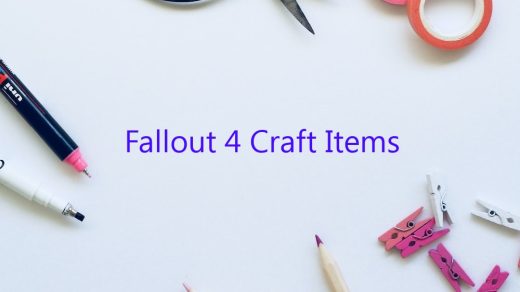When it comes to kitchen islands, there are a few things that you need to take into consideration. One of those things is the back of the island. In many cases, this is left unfinished, but there are a few ways that you can finish it. Read on for some tips on how to finish the back of your kitchen island.
One option is to use a wood veneer. This is a good option if you want to match the wood on the island to the wood on the cabinets. You can find wood veneers in a variety of colors and wood types. If you choose this option, you will need to attach the veneer to the back of the island with adhesive.
Another option is to use a tile backsplash. This is a great option if you want to add some color or personality to the island. You can choose a tile that matches the color scheme of your kitchen or go with a unique pattern or design. If you choose this option, you will need to install the tile backsplash yourself.
Finally, you can use a backsplash panel. This is a panel that is designed to be used as a backsplash. It is made of a materials like metal, plastic, or wood. You can find backsplash panels in a variety of designs and colors. If you choose this option, you will need to install the panel yourself.
No matter which option you choose, make sure to take into account the size and shape of the back of your kitchen island. You want to choose an option that will look good and be functional.
Contents
How do you finish an unfinished kitchen island?
When it comes to remodeling your kitchen, there are many different options to choose from. You might decide to add an island, but what do you do if you’re left with an unfinished island? Here are a few tips on how to finish an unfinished kitchen island.
If you have an unfinished kitchen island, the first step is to decide what you want to use it for. Once you know what you want to use it for, you can decide what type of countertop you want, what type of cabinets you want, and what type of accessories you want.
The next step is to measure the island and buy the materials you need. Once you have the materials, you can start assembling the island. This might be a little tricky if you don’t have any experience, so it might be a good idea to get help from a friend or family member.
Once the island is assembled, you can start installing the countertop. Make sure the countertop is level before you start drilling the screws. If the countertop is not level, you can use shims to make it level.
Once the countertop is installed, you can start installing the cabinets. Make sure the cabinets are level and that the screws are tight. If you’re not sure how to install the cabinets, you can find instructions online or in a kitchen remodeling guide.
The final step is to install the accessories. This might include a sink, a faucet, a stove, or a dishwasher. Make sure the accessories are installed correctly and that the screws are tight.
If you follow these steps, you can finish your unfinished kitchen island in no time.
How do you put an island back panel on?
Island back panels are an important part of kitchen design and functionality. They provide a surface for food preparation, and they can also add extra storage to your kitchen. If your island back panel is damaged or needs to be replaced, it’s important to know how to put it back on correctly. Here’s how:
1. Remove the old island back panel. This may require loosening screws or bolts that hold it in place.
2. If the new panel is the same size as the old one, you may be able to simply screw or bolt it in place.
3. If the new panel is a different size, you will need to cut it to size. Use a saw or a jigsaw to cut it to the correct dimensions.
4. Once the panel is cut to size, attach it to the island using screws or bolts.
5. Reattach the trim or other decorative elements that were removed when the panel was removed.
6. Enjoy your new island back panel!
Can you tile the back of a kitchen island?
Conventional wisdom says that backsplashes should only be tiled up to the countertop. But what if you want to tile the entire backside of your kitchen island? Can you do that?
The answer is yes, you can tile the back of a kitchen island. But there are a few things to keep in mind.
First, you’ll need to make sure the island is sturdy enough to support the weight of the tile. If it’s not, you’ll need to reinforce it with additional framing or supports.
Second, you’ll need to make sure the island is properly sealed. Tiles can be porous, and if water or liquid seeps behind them, it can cause damage to the cabinet or island structure. Make sure to use a good sealant to protect against moisture.
Third, you’ll need to make sure the tiles are properly grouted. Grout is necessary to help keep tiles in place, and it also helps to protect them from moisture and dirt. Make sure to use a good quality grout that will withstand everyday wear and tear.
If you follow these guidelines, you should be able to tile the back of your kitchen island with no problems. It’s a great way to add some extra style and personality to your kitchen, and it can also help to protect the island from water and dirt damage.
How do you attach trim to kitchen island?
There are a few ways to attach trim to a kitchen island. The most common way is to use construction adhesive and nails. You can also use screws or wood glue.
If you are using adhesive and nails, first apply the adhesive to the back of the trim. Then, nail the trim in place. Make sure the nails are sunk below the surface of the trim.
If you are using screws, first drill pilot holes into the trim and the island. Then, screw the trim in place.
If you are using wood glue, first spread the glue on the back of the trim. Then, press the trim in place.
How do you make butcher block waterproof?
Butcher block is a popular kitchen surface made from blocks of hardwood. The wood is cut into uniform strips, then glued and pressed together to create a solid surface. While butcher block is beautiful and sturdy, it can be susceptible to water damage. If you want to make your butcher block waterproof, there are a few things you can do.
One way to waterproof your butcher block is to apply a sealant. There are a variety of sealants available, both commercial and homemade. You can either seal the entire surface of the block, or just the end grain, which is the most vulnerable to water damage. Be sure to follow the sealant manufacturer’s instructions for application.
Another way to waterproof butcher block is to coat it with a food-safe oil. This will help to create a barrier between the wood and any liquids that may come into contact with it. You can use any food-safe oil, such as mineral oil, vegetable oil, or beeswax. Simply apply a thin coat to the surface of the block and let it dry. Reapply as needed.
If you are using your butcher block to prepare raw meat, you may also want to consider using a waterproof cutting board. This will help to prevent any juices from the meat from seeping into the wood and causing damage.
Waterproofing your butcher block is a simple way to help protect it from moisture and keep it looking beautiful for years to come.
What kind of oil do you use on butcher block countertops?
Butcher block countertops are a popular choice for many homeowners because of their natural beauty and durability. To protect and extend the life of your butcher block countertops, it’s important to use the right kind of oil.
The most popular type of oil to use on butcher block countertops is mineral oil. Mineral oil is a natural oil that is derived from petroleum. It is non-toxic and non-irritating, making it a safe choice for households with children and pets. Mineral oil is also a good choice for people who have allergies or sensitivities to other types of oils.
Another option for oiling your butcher block countertops is vegetable oil. Vegetable oil is a plant-based oil that is made from various seeds, nuts, and vegetables. It is a good choice for people who are looking for an eco-friendly option. However, vegetable oil is not as durable as mineral oil and may need to be reapplied more often.
Whatever type of oil you choose, be sure to apply it to your butcher block countertops on a regular basis. This will help protect the surface and keep it looking beautiful for years to come.
What can I use for cabinet backing?
There are many materials you can use for cabinet backing. The most popular are wood, metal, and plastic.
Wood is a popular choice because it is durable and can be stained or painted to match your cabinets. It is also a good choice if you want to add insulation to your cabinets.
Metal is a good choice if you are looking for a durable, moisture-resistant option. It is also a good choice if you want to add a decorative touch to your cabinets.
Plastic is a good choice if you are looking for a durable, moisture-resistant, and affordable option.




